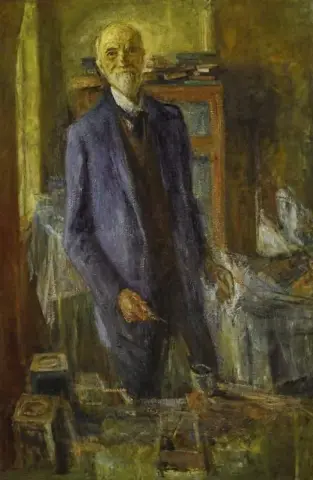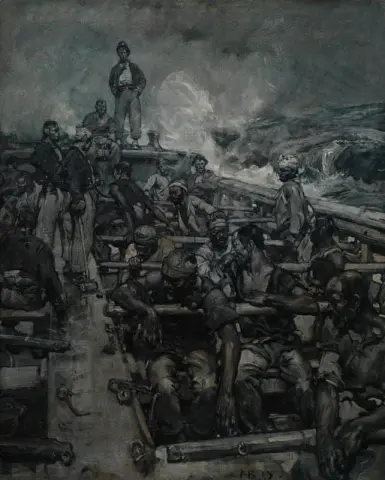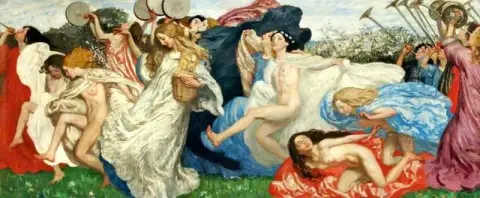Hand-painted painting reproductions - Movements - Art and crafts
Imagine owning a museum-worthy piece of art, created by the greatest artists in history and reproduced by passionate and experienced painters. At POD, we offer you the opportunity to make that dream a reality. We reproduce the works of art of your favorite painters from the Art and crafts art movement in the smallest details, so that you can enjoy them in your own home.
Our reproductions are made by experienced artists who use the best materials and techniques. We are committed to providing you with works of art of the highest quality, which will bring joy and inspiration to your family for generations to come.
The Arts and Crafts Movement: Celebrating Craftsmanship and Beauty
The Arts and Crafts Movement is a transformative art and design movement that emerged in the late 19th century as a reaction against the industrialization and mass production of the Victorian era. Emphasizing handmade craftsmanship, natural materials, and the beauty of functional design, this movement sought to restore the dignity of labor and the connection between art and everyday life. The Arts and Crafts Movement appeals to those with a deep appreciation for craftsmanship, tradition, and the timeless beauty of handmade objects, making it a perfect choice for collectors and enthusiasts who value art that is both beautiful and meaningful.
Early Origins and Historical Context
The Arts and Crafts Movement began in Britain in the 1860s, inspired by the ideas of John Ruskin and William Morris. Ruskin, a critic and social thinker, advocated for the moral and aesthetic value of handmade goods, while Morris, a designer and poet, sought to revive traditional craftsmanship and create beautiful, functional objects for everyday use.
The movement was a response to the dehumanizing effects of industrialization, which had led to the decline of skilled craftsmanship and the proliferation of poorly made, mass-produced goods. The Arts and Crafts Movement sought to counter this trend by promoting the value of handmade objects, the use of natural materials, and the integration of art into everyday life.
Key figures in the movement include William Morris, Charles Rennie Mackintosh, Gustav Stickley, and Frank Lloyd Wright, whose works exemplify the movement’s principles of craftsmanship, simplicity, and beauty.
Artistic Development and Style
The Arts and Crafts Movement is characterized by its emphasis on handmade craftsmanship, natural materials, and functional design. The movement encompassed a wide range of disciplines, including furniture, textiles, ceramics, metalwork, and architecture, all united by a commitment to quality and beauty.
Key elements of the Arts and Crafts Movement include:
-
Handmade Craftsmanship: The movement prioritized the skill and creativity of individual artisans, celebrating the unique qualities of handmade objects.
-
Natural Materials: Artists and designers used materials such as wood, stone, metal, and glass, often in their natural state or with minimal processing.
-
Functional Design: The movement emphasized the importance of creating objects that were both beautiful and useful, integrating art into everyday life.
-
Simplicity and Honesty: Arts and Crafts designs are characterized by their simplicity, honesty, and lack of unnecessary ornamentation, reflecting the movement’s commitment to integrity and authenticity.
Themes and Significance
The Arts and Crafts Movement explores the relationship between art, craftsmanship, and everyday life, celebrating the beauty and value of handmade objects. The movement’s emphasis on quality, tradition, and the integration of art into daily life has made it a favorite among those who value art that is both meaningful and functional.
Key themes in the Arts and Crafts Movement include:
-
The Dignity of Labor: The movement sought to restore the dignity of labor by emphasizing the skill and creativity of individual artisans.
-
The Beauty of Nature: Arts and Crafts designs often draw inspiration from the natural world, using organic forms and motifs to create a sense of harmony and balance.
-
The Integration of Art and Life: The movement aimed to integrate art into everyday life, creating objects that were both beautiful and useful.
-
The Rejection of Industrialization: The Arts and Crafts Movement was a reaction against the dehumanizing effects of industrialization, advocating for a return to traditional craftsmanship and the use of natural materials.
Achievements and Influence
The Arts and Crafts Movement has had a profound impact on the art and design world, influencing movements such as Art Nouveau, Modernism, and Contemporary Craft. The movement’s emphasis on craftsmanship, quality, and the integration of art into everyday life has inspired generations of artists, designers, and thinkers.
Notable figures in the Arts and Crafts Movement include:
-
William Morris: A designer, poet, and social activist, known for his intricate textiles, wallpapers, and furniture designs, such as Strawberry Thief and Red House.
-
Charles Rennie Mackintosh: A Scottish architect and designer, celebrated for his innovative and elegant designs, such as the Glasgow School of Art and the Willow Tearooms.
-
Gustav Stickley: An American furniture maker and designer, known for his simple, functional designs and the promotion of the Craftsman style.
-
Frank Lloyd Wright: An American architect and designer, whose work was influenced by the principles of the Arts and Crafts Movement, creating harmonious and integrated designs, such as the Robie House and Fallingwater.
Legacy
The Arts and Crafts Movement continues to captivate audiences today, offering a timeless celebration of craftsmanship, beauty, and the integration of art into everyday life. The movement’s emphasis on quality, tradition, and the value of handmade objects ensures its enduring appeal, particularly among those who value art that is both meaningful and functional.
Today, Arts and Crafts designs are celebrated in museums, galleries, and private collections around the world, where they serve as a testament to the power of creativity to transform everyday life. From the intricate textiles of William Morris to the elegant architecture of Charles Rennie Mackintosh, these works offer a window into the soul of a movement that redefined the relationship between art and life.
Where to Find Reproductions of Arts and Crafts Designs
For those who wish to bring the beauty and craftsmanship of the Arts and Crafts Movement into their homes, POD (Painting On Demand) offers a curated selection of high-quality reproductions. These artworks capture the essence of the Arts and Crafts Movement, from the intricate patterns of William Morris to the elegant designs of Charles Rennie Mackintosh, providing an authentic artistic experience for discerning collectors. Whether you’re drawn to the traditional or the innovative, the Arts and Crafts Movement offers a timeless connection to the beauty of handmade craftsmanship.

















